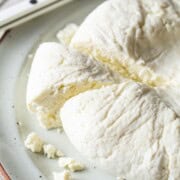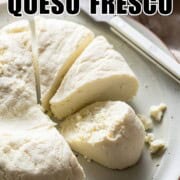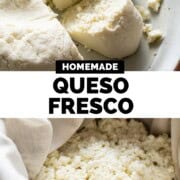This homemade queso fresco recipe is so easy to make! This light and crumbly Mexican cheese brings a freshness and subtle tang to a variety of dishes. While store-bought versions are readily available, nothing compares to this easy and friendly homemade version’s rich, creamy texture and pure flavor.
If you love homemade versions of your favorite Mexican ingredients, consider making your own Mexican crema, homemade chili powder, and homemade taco seasoning!
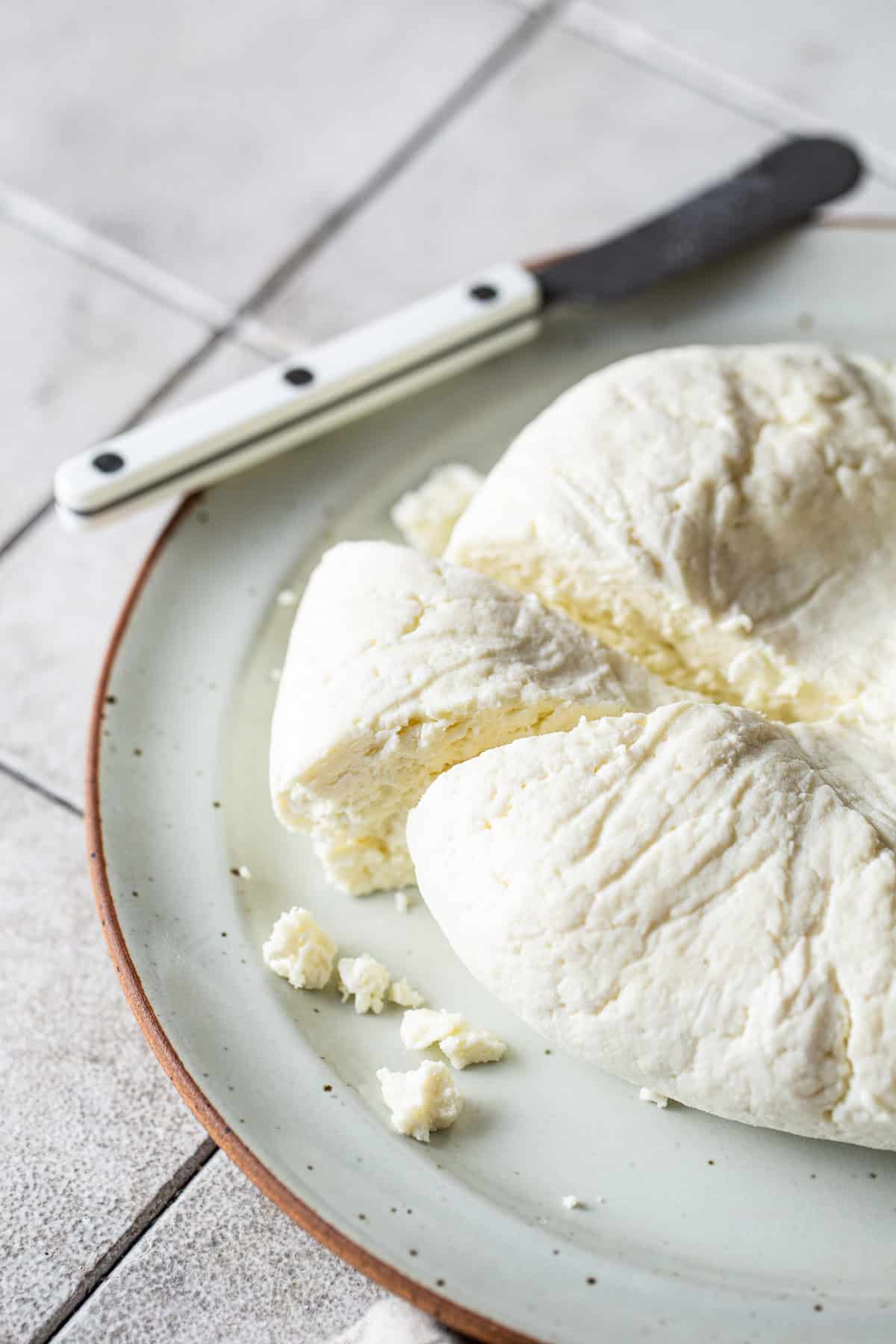
Queso fresco is something I always grew up having in my fridge, and I still do! It’s definitely a staple ingredient in my Mexican kitchen. I like to crumble it on top of almost everything ranging from tacos, enchiladas, chilaquiles, esquites, or just plain rolled up in a homemade corn tortilla with a drizzle of salsa mexicana.
Making cheese from scratch seemed really intimidating at first, but I was surprised at how easy this actually was to make. With a bit of patience, you can easily make queso fresco at home, too. Here’s why I love this recipe:
- It’s fresh and creamy: Queso fresco has a signature creamy and slightly tangy taste, but with this homemade version, those flavors come through even more!
- Simple ingredients: This queso fresco recipe only uses 3 staple ingredients, no fillers or preservatives.
What Is Queso Fresco?
Queso fresco is a fresh Mexican crumbling cheese that’s traditionally made with raw cow’s milk or a combination of cow and goat milk. This is what provides it with its slightly salty but mildly tangy fresh taste.
Queso fresco is great for balancing spicy foods when you use it as a topping or stuffing to freshen up any dish. Learn more about queso fresco.
You can typically find queso fresco in most grocery stores, but making your own gives you the ultimate fresh flavor with simple, clean ingredients.
Ingredients in This Queso Fresco Recipe
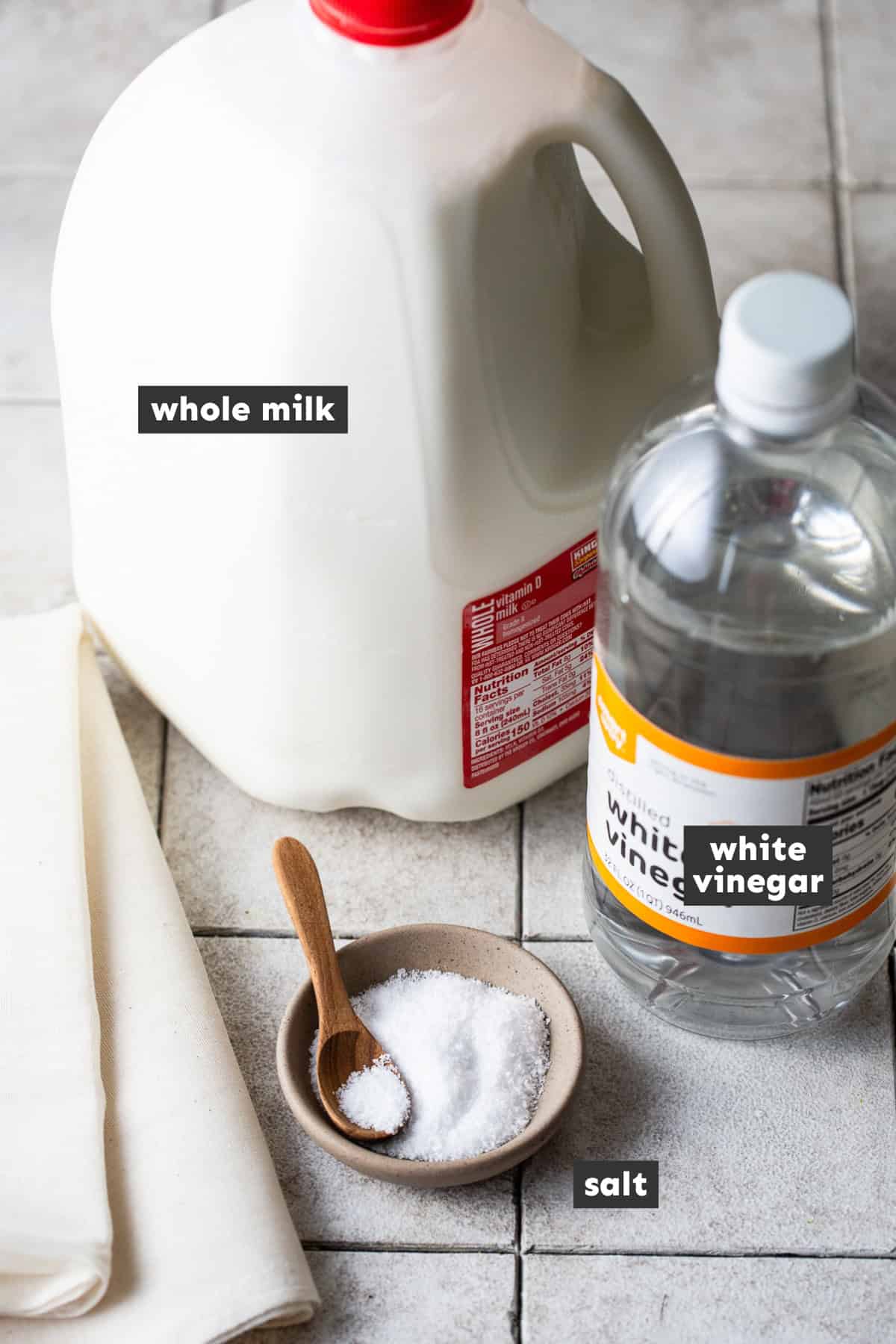
- Whole milk: This is the best milk for queso fresco, which gives it an ultra-creamy texture and flavor.
- Distilled white vinegar: This is what acidifies and creates curds for the cheese. If you use other vinegar substitutes, just note it will change the flavor. Some recipes also call for lemon juice, but I find it makes the queso fresco too soft, closer to a ricotta consistency.
- Kosher salt: This is my go-to, but feel free to use table salt. If you do use table salt, you’ll need to use less than the amount listed for kosher salt.
Recipe Tips
- Watch the milk. While the milk is heating to 170℉, make sure to stir it frequently and keep an eye on the temperature. If left unattended, it’s easy to scorch the milk. I recommend using an instant-read thermometer.
- Vinegar: Queso fresco is a fairly simple and straightforward recipe. Some variations include using lemon juice instead of vinegar, but I found that this gave the queso fresco a much softer consistency, similar to ricotta. If that is your preference, you can use ¾ cups of fresh lemon juice (about 5-6 lemons) instead.
- For a more crumbly texture, gather and tie the cheesecloth over your faucet while it drips instead of pressing it.
- Salt can be added to taste. You can adjust it as needed when mixing it with the cheese curds.
How to Serve Queso Fresco
Queso fresco is a cheese that’s often used as a topping on almost every delicious Mexican dish you can think of! Here are some ideas:
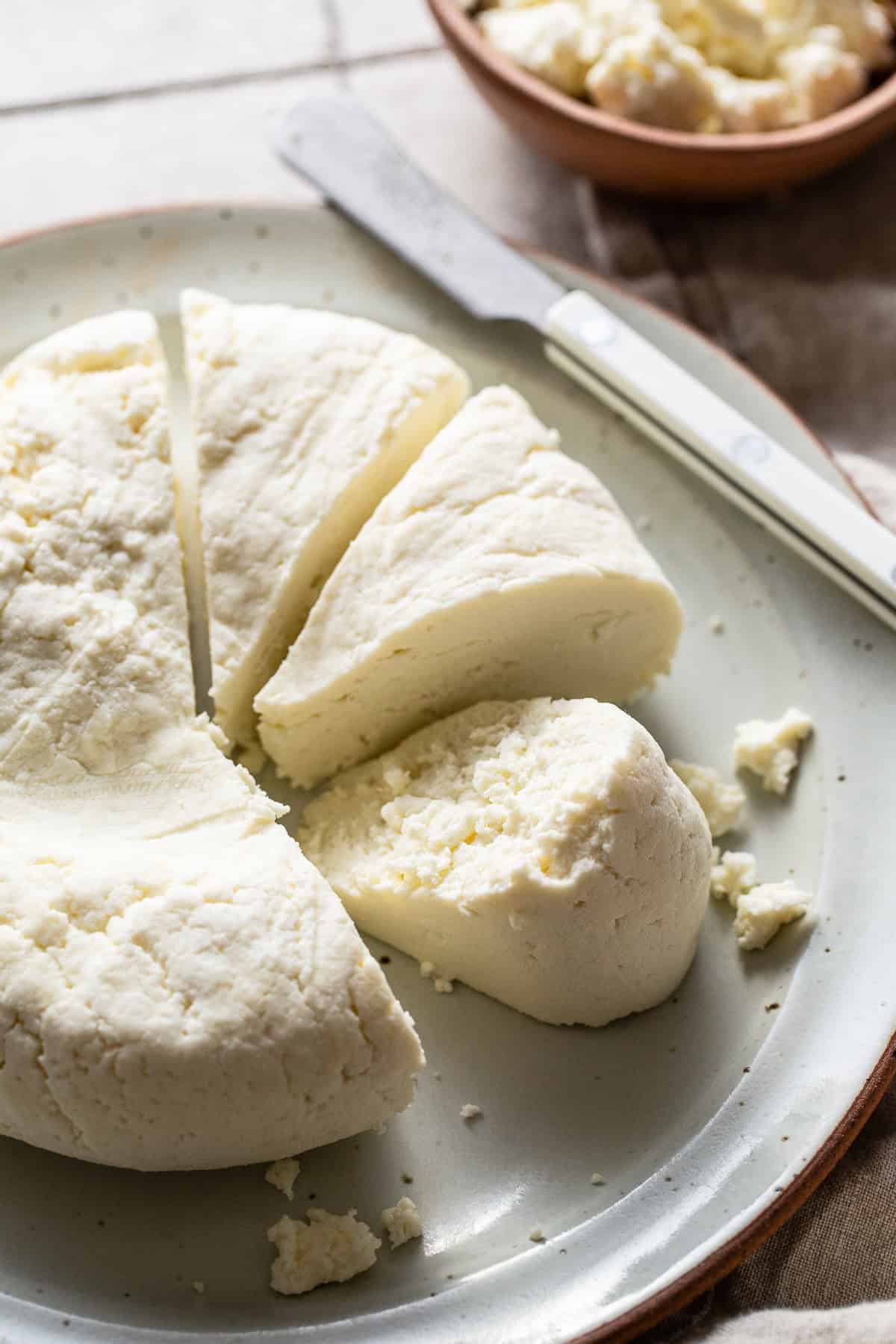
Frequently Asked Questions
What ingredients are needed to make queso fresco?
To make queso fresco, you only need 3 ingredients: whole milk, salt, and vinegar.
Can I make queso fresco without rennet?
Yes, you only need milk and an acid, like vinegar, to make queso fresco. You can also use lemon juice.
What type of milk is best for making queso fresco?
Whole cow’s milk is best for making queso fresco. While you can technically use a lower fat content milk like 2% or 1%, the flavor and texture won’t be as good as whole milk.
Storage
To store homemade queso fresco, place it inside an airtight container and refrigerate for up to 1 week. I do not recommend freezing it.
More Mexican Recipes
If you tried this Queso Fresco Recipe or any other recipe on Isabel Eats, don’t forget to rate the recipe and let me know how it went in the comments below! I love hearing about your experience making it!
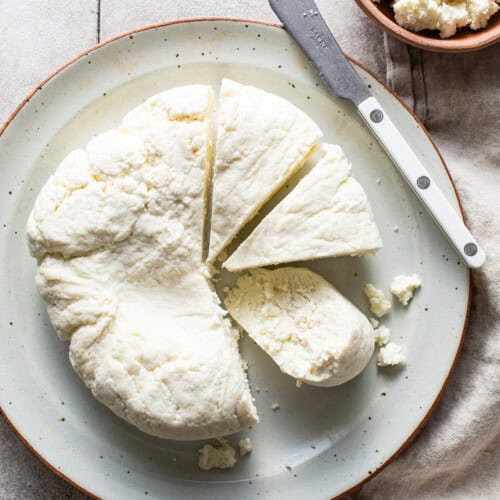
Queso Fresco Recipe
Learn how to make this homemade queso fresco recipe at home! Just 3 simple ingredients create this fresh, flavorful Mexican cheese.
Instructions
-
Add the milk to a large pot or Dutch oven and heat over medium-low until the milk reaches 170℉, stirring frequently and reading the temperature with an instant-read thermometer. This should take about 1 hour.
-
Take off the heat and pour in the vinegar. Gently stir until the milk starts to curdle.
-
Leave the pot uncovered for 30 minutes and allow the curds to form and fully separate.
-
Layer a colander or strainer with a cheesecloth and set it over a large bowl. Transfer the curds to the prepared colander with a slotted spoon or spider strainer.
-
Cover the exposed curds with plastic wrap to keep in the moisture and allow it to drain for 20 minutes.
-
Gently stir in the salt until combined.
-
Press the cheese by gathering the curds into a ball in the middle of the cloth and pressing them into a hockey puck shape. Tie the cloth closed around the cheese. Place the bound cheese back in the colander or strainer and place a heavy can or pan on top. Let sit for about 1 ½ hours.
-
Uncover the cheese and transfer it to an airtight container for storage in the refrigerator or use immediately.
Notes
- Storage: Homemade queso fresco can be stored in an airtight container in the refrigerator for up to 1 week.
- Vinegar: Queso fresco is a fairly simple and straightforward recipe. Some variations of recipes include using lemon juice instead of vinegar, but I found that it gave the queso fresco a much softer consistency, similar to ricotta. If that is your preference, you can use ¾ cup of fresh lemon juice (about 5-6 lemons) instead.
- For a more crumbly texture, gather and tie the cheesecloth over your faucet while it drips instead of pressing it.
- Salt can be added to taste. You can adjust it as needed when mixing it with the cheese curds.
Nutrition Information
Serving: 1serving, Calories: 230kcal (12%), Carbohydrates: 18g (6%), Protein: 12g (24%), Fat: 12g (18%), Saturated Fat: 7g (35%), Polyunsaturated Fat: 0.4g, Monounsaturated Fat: 3g, Cholesterol: 45mg (15%), Sodium: 842mg (35%), Potassium: 568mg (16%), Sugar: 18g (20%), Vitamin A: 613IU (12%), Calcium: 467mg (47%), Iron: 0.01mg
Photography by Ashley McLaughlin.


